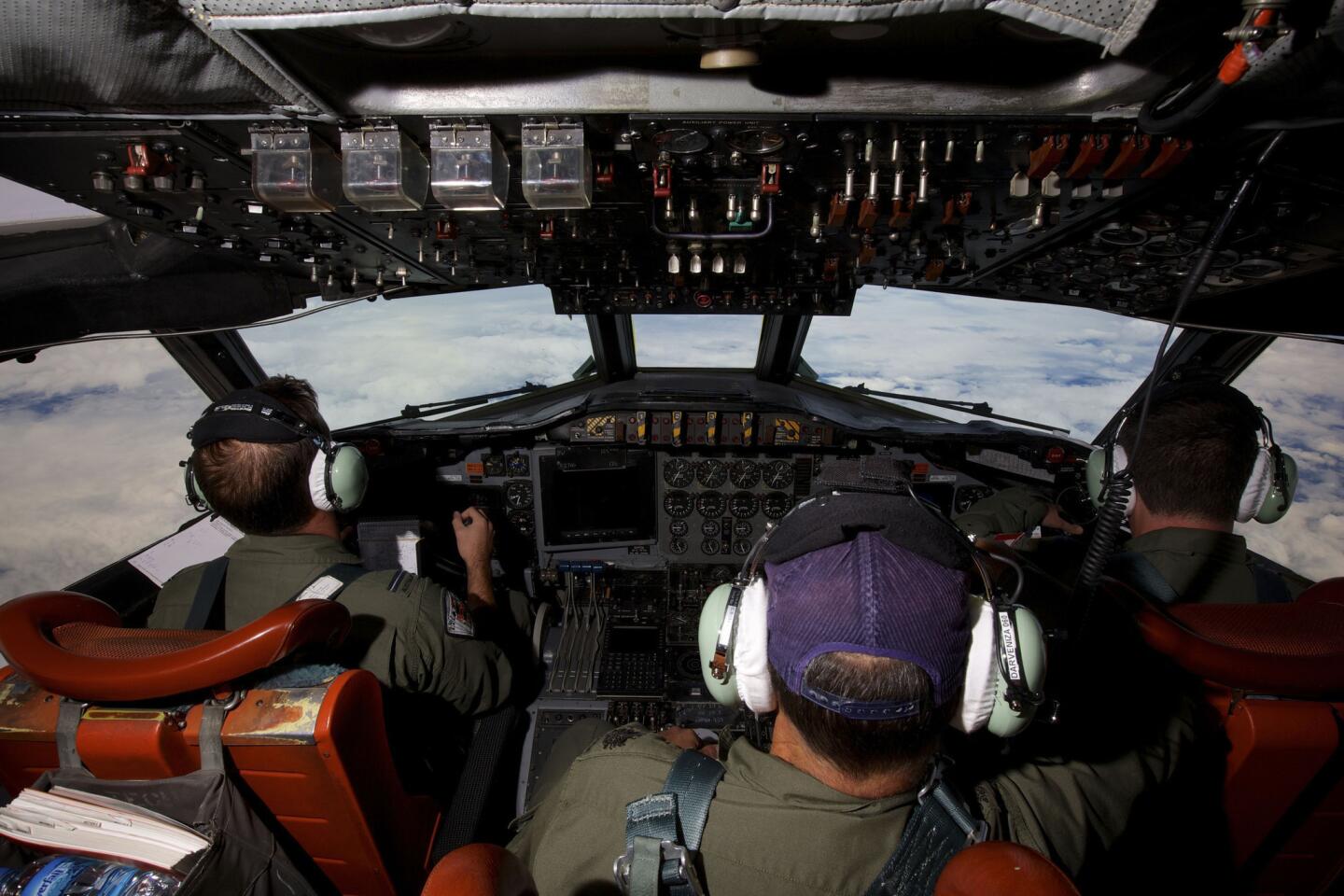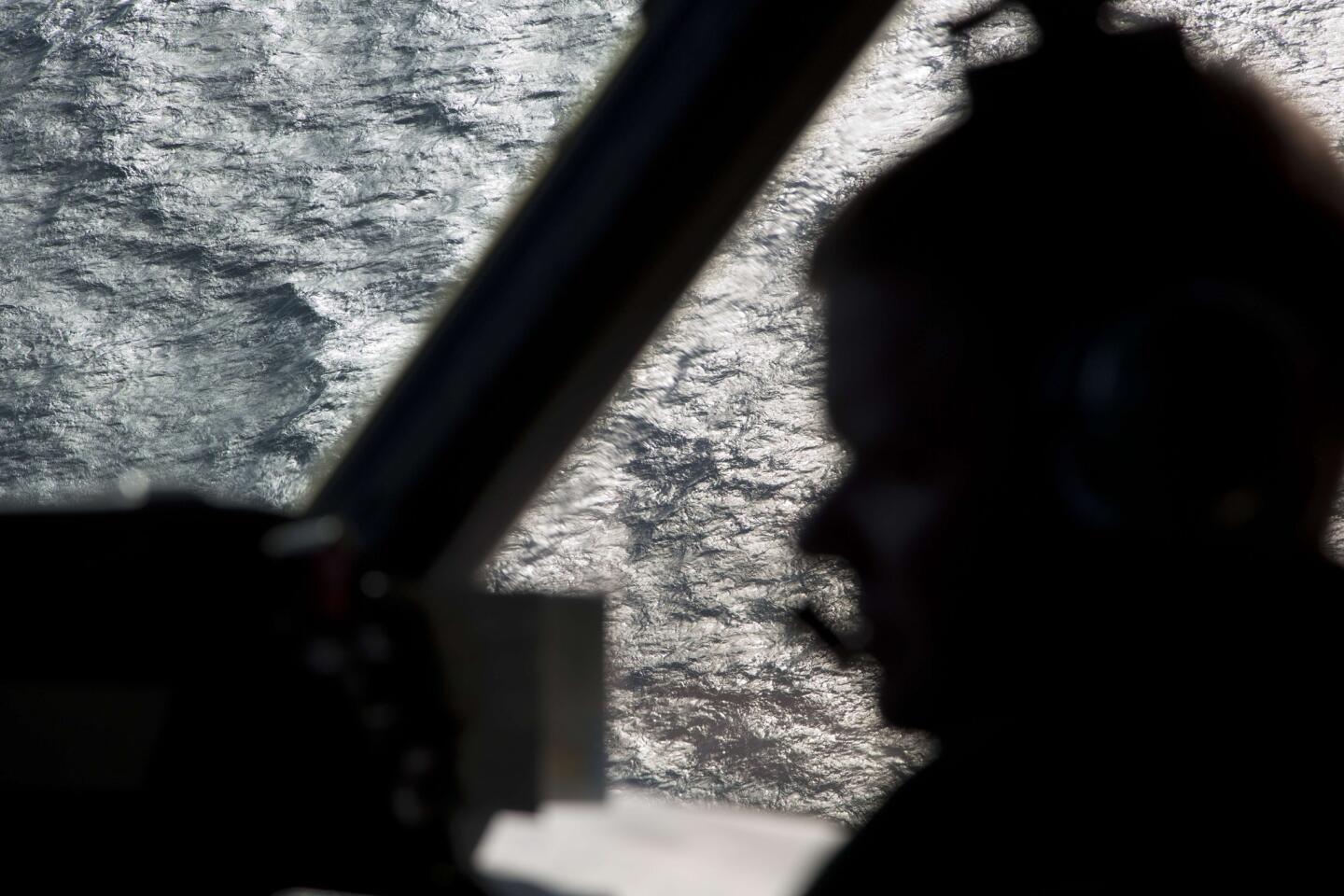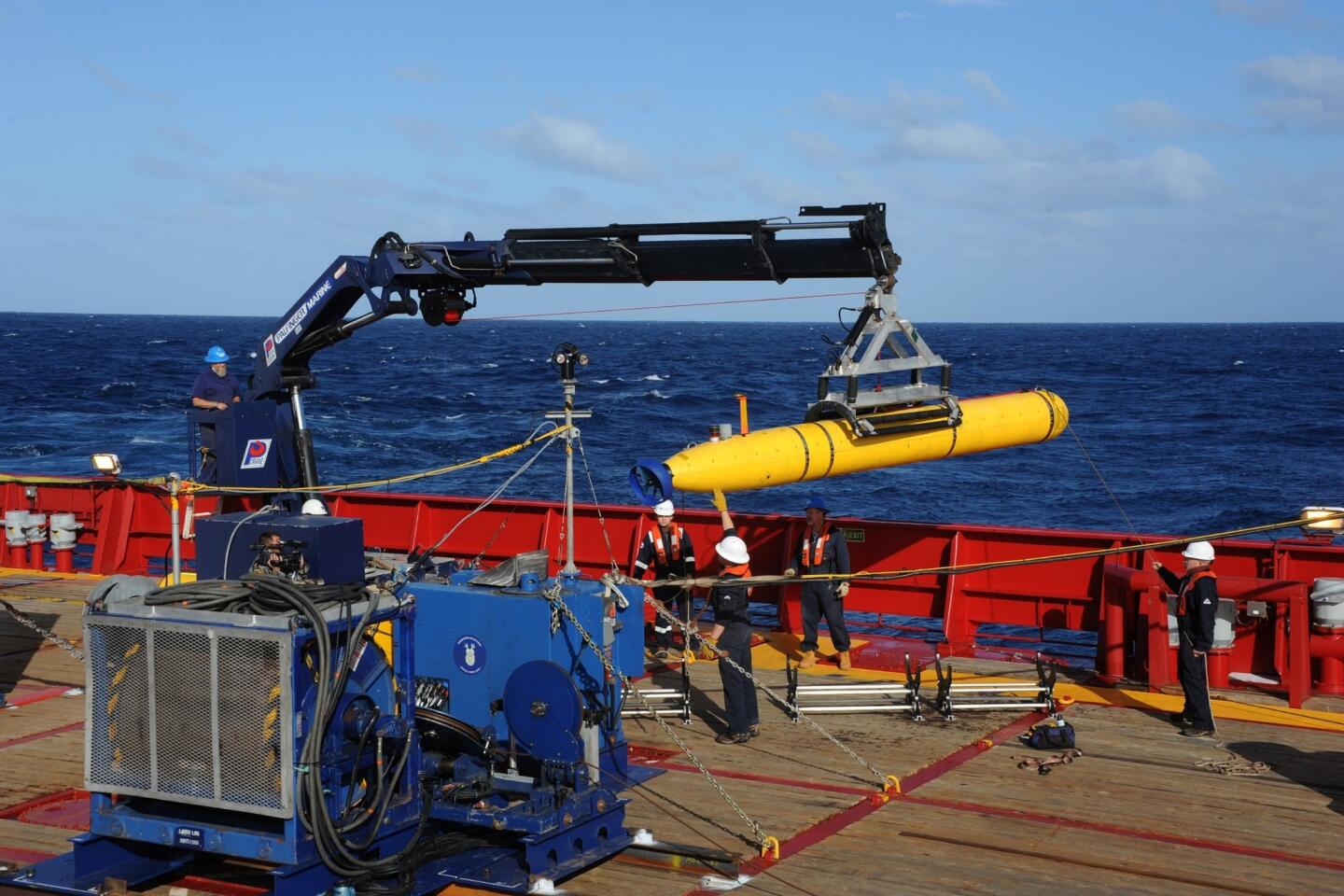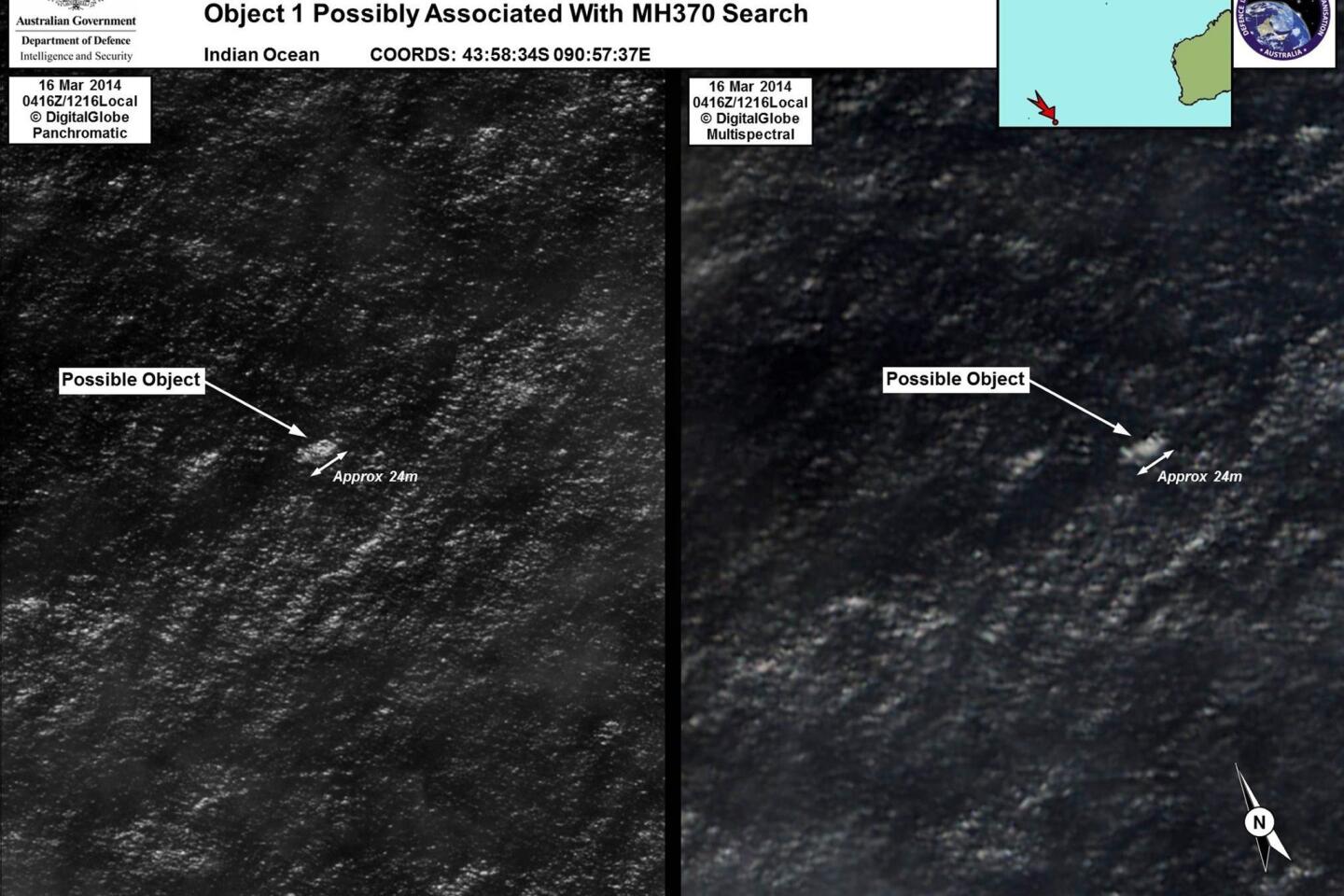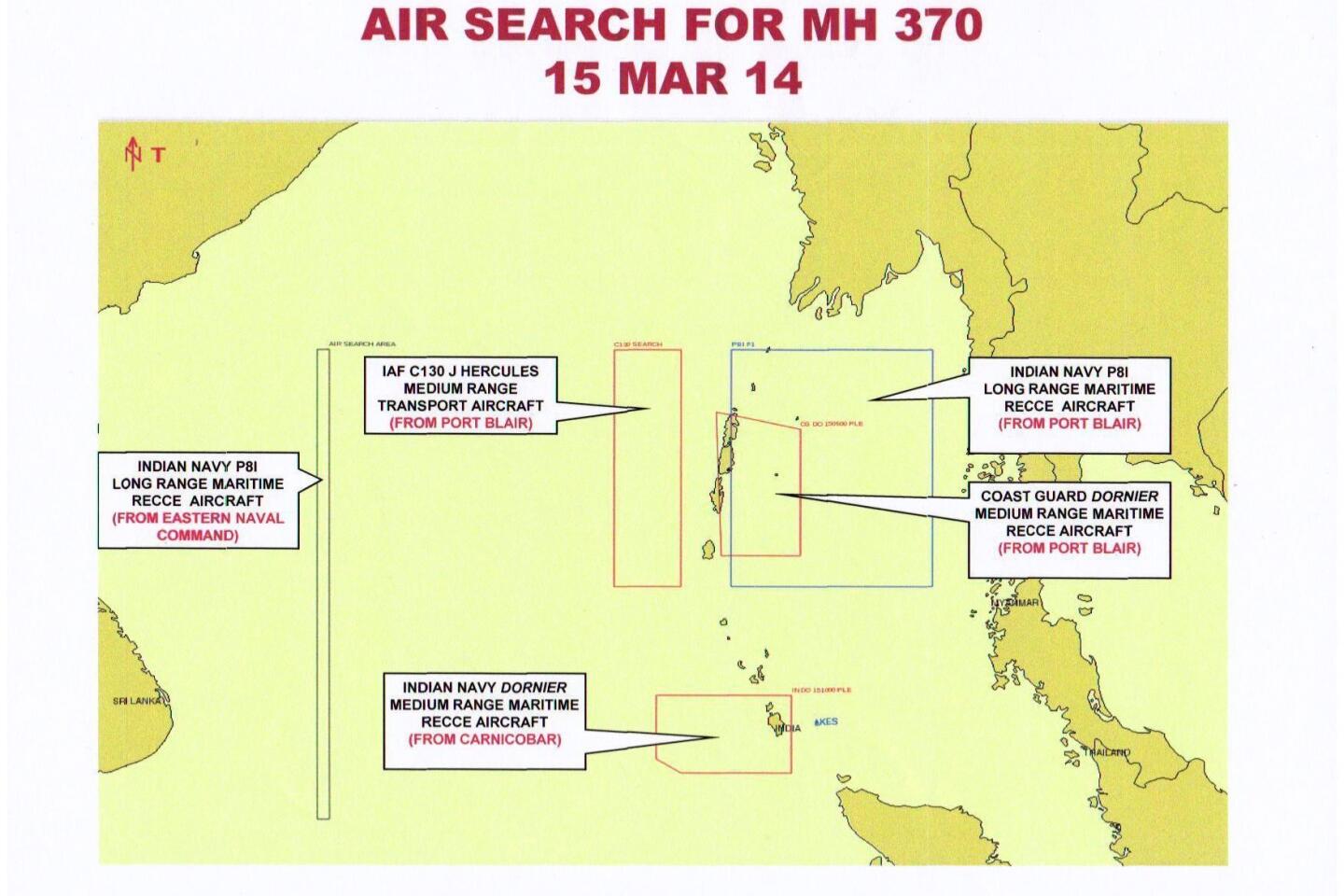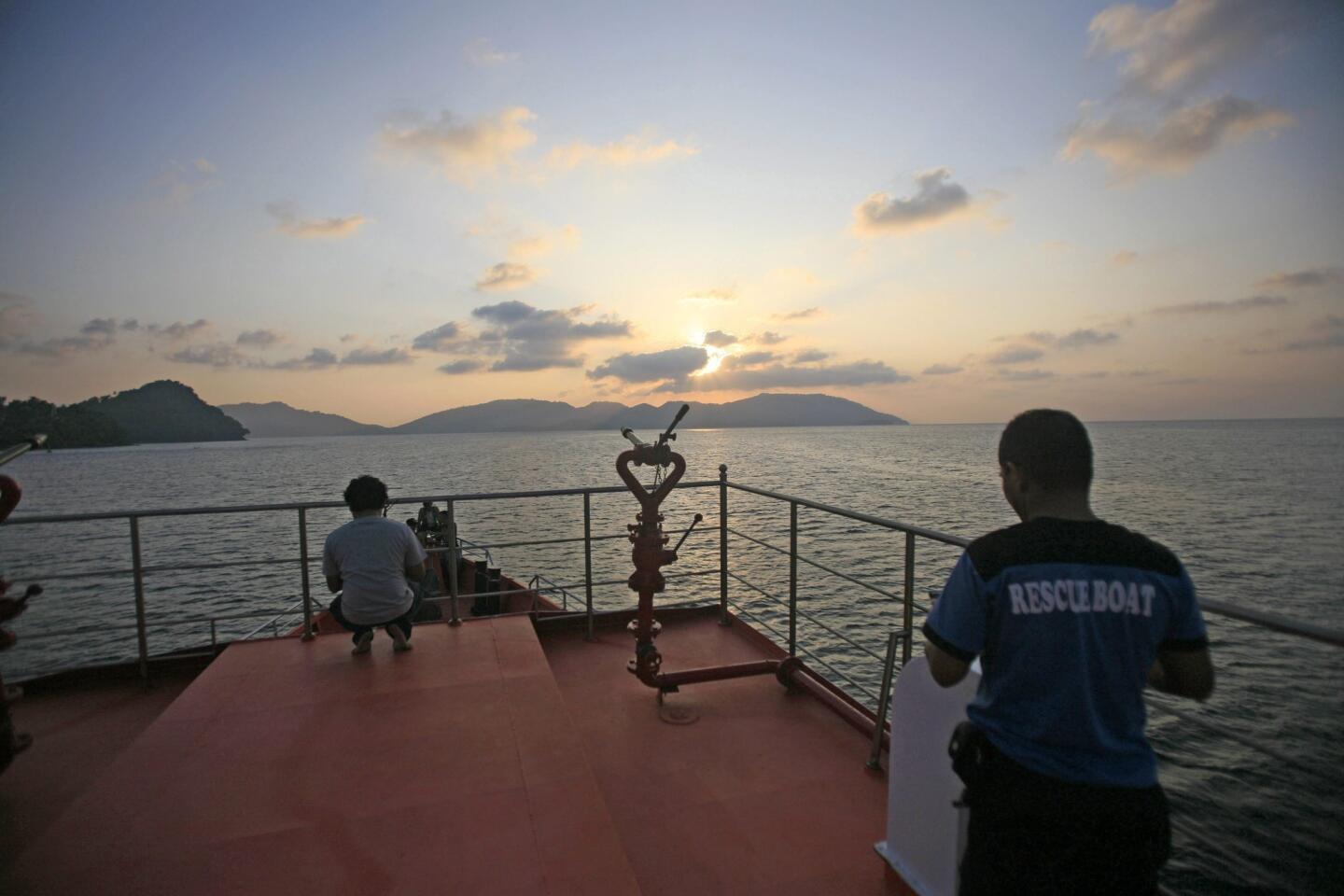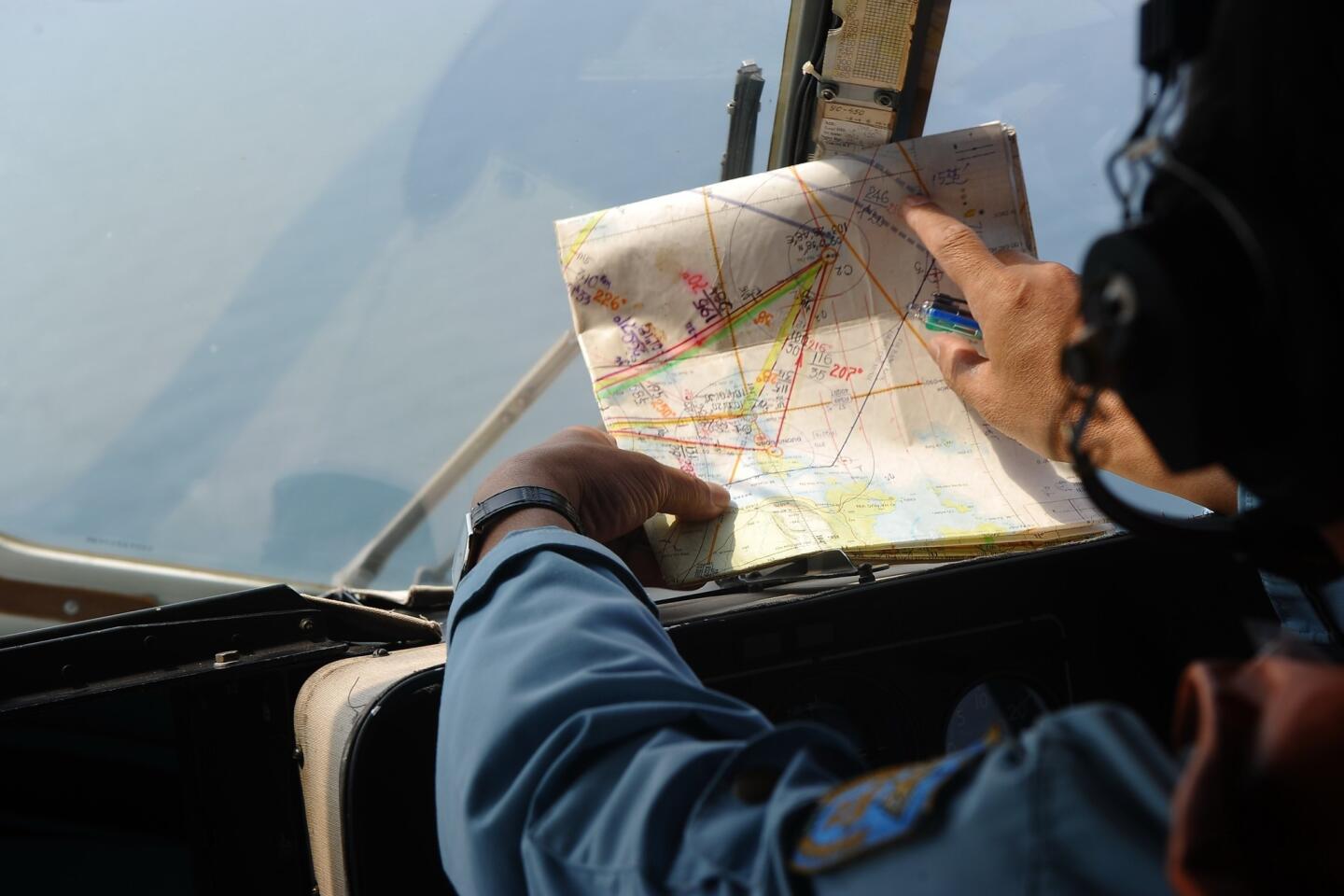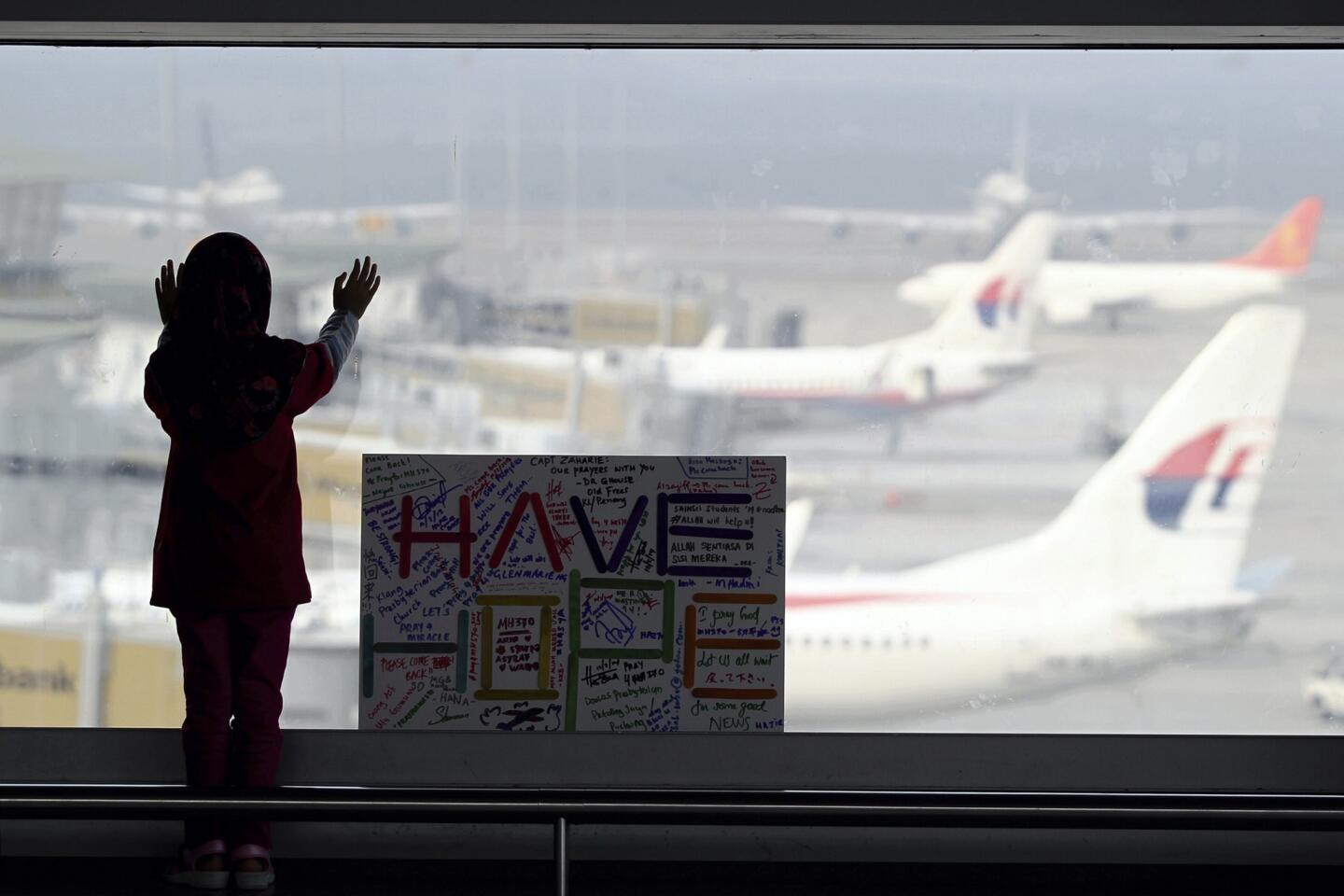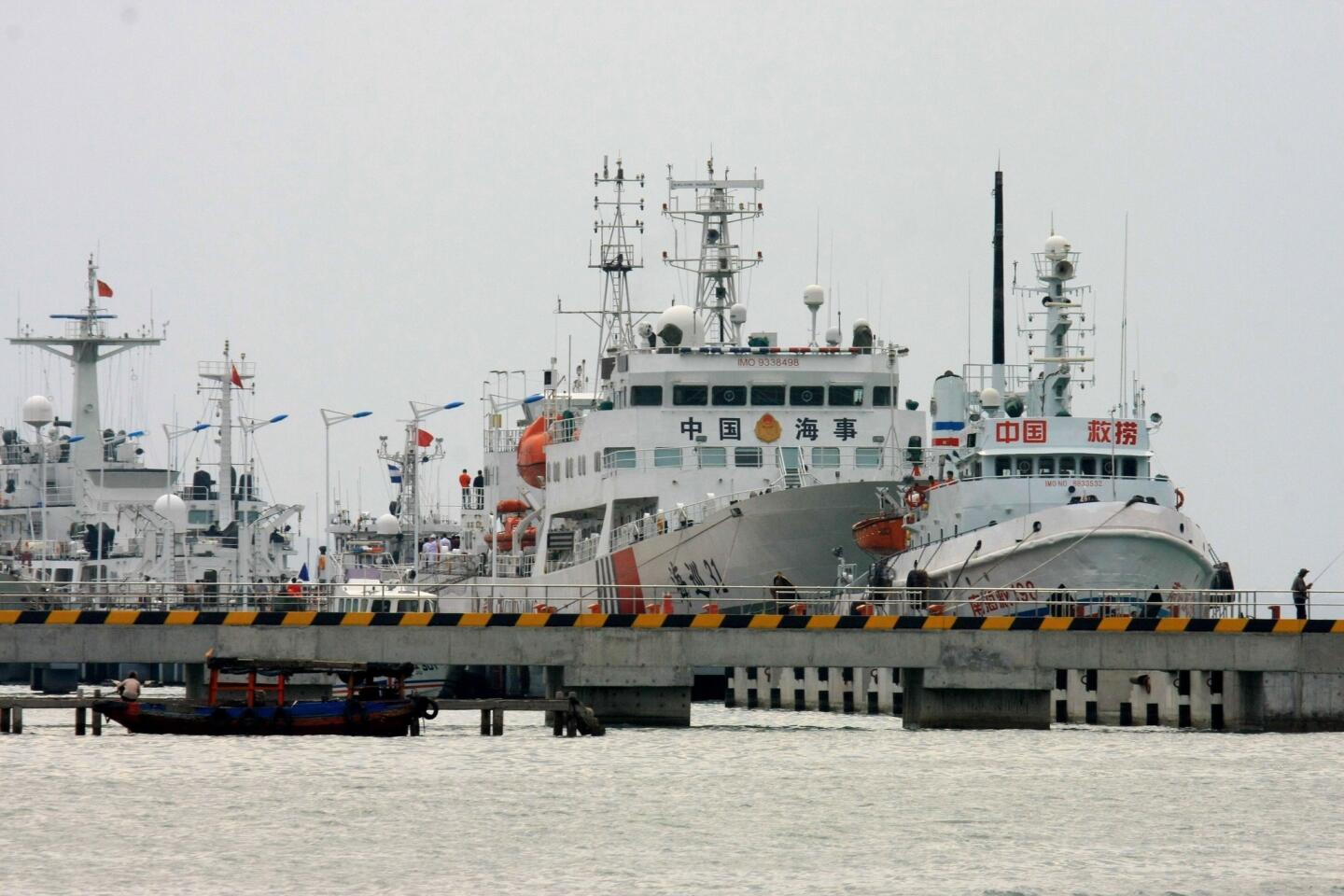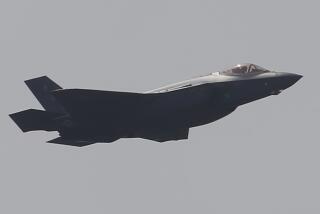Clues emerge on Malaysia jet, but weather interrupts search
- Share via
BEIJING -- More tantalizing clues emerged Thursday about the wreckage of Malaysia Airlines Flight 370 as fresh satellites photos showed a debris field in the South Indian Ocean off Australia, but the retrieval was frustrated by poor weather.
Thailand announced that it had spotted 300 floating objects on an earth observation satellite photograph taken Monday, although Anond Snidvongs, director of the Geo-Informatics Space Technology Development Agency, cautioned: “We cannot -- dare not -- confirm they are debris from the plane.” Japan also announced Thursday that one of its satellites had spotted debris in the same area.
The latest findings corroborate satellite photos taken over the weekend, provided by the French, showing a debris field.
However, a flotilla of ships and planes has not been able to retrieve any of the debris for closer inspection because of gale-force winds and swelling seas. For the second time this week, the weather forced a suspension of search efforts.
A U.S Navy P-8 Poseidon aircraft scheduled to join the search Thursday afternoon was grounded, while Australian and Chinese planes that went out in the morning were called back.
“The forecast in the area was calling for severe icing, severe turbulence and near zero visibility,” Lt. Cmdr. Adam Schantz, the officer in charge of the P-8 aircraft detachment, was quoted telling the Reuters news agency.
“Anybody who’s out there is coming home and all additional sorties from here are canceled.”
Five ships are continuing their efforts in a 30,000-square-mile search area in the rough waters of the Indian Ocean southwest of Perth, an area that Australian Prime Minister Tony Abbott called “as close to nowhere as it’s possible to be.”
The delay is especially frustrating because promising satellite photos were released Wednesday showing 122 objects in the ocean that could be wreckage from the Boeing 777. With the heavy seas and winds, however, the debris is likely to drift elsewhere.
The waters of the South Indian Ocean are among the most treacherous in the world with underwater volcanoes and strong westerly winds between the latitudes of 40 and 50 degrees south contributing to a phenomenon called the “roaring forties.”
Malaysia Airlines Flight 370 disappeared March 8 on a red-eye run from Kuala Lumpur to Beijing. Although the Malaysian government last weekend declared the flight lost without survivors, many families say they are unwilling to give up hope until confirmed debris is found.
However, Chinese insurance companies have begun to pay compensation on life insurance policies for passengers aboard the flight.
China Life, the country’s largest life insurance company, said Thursday that it had already paid $680,000 to families of seven passengers. “China Life is deeply grieved at the news and will ensure compensation and all other related services are fully implemented,” a company spokesman was quoted telling the official Xinhua news agency.
Two other Chinese insurance companies said they were also paying claims on the assumption that all passengers on the flight had died.
Twitter: @barbarademick
More to Read
Sign up for Essential California
The most important California stories and recommendations in your inbox every morning.
You may occasionally receive promotional content from the Los Angeles Times.





